Jan & John Maggs
Antiques and Art
~ ~ ~ ~ ~ ~ ~ ~ ~ ~ ~ ~ ~ ~ ~ ~ ~ ~ ~ ~ ~ ~ ~ ~ ~ ~ ~ ~ ~ ~ ~ ~ ~ ~ ~ ~ ~ ~ ~ ~ ~ ~ ~ ~ ~ ~ ~ ~
Exploring historic English properties - Our 2024 National Trust Odyssey
Part II - Cumbria and Lancashire
~ ~ ~ ~ ~ ~ ~ ~ ~ ~ ~ ~ ~ ~ ~ ~ ~ ~ ~ ~ ~ ~ ~ ~ ~ ~ ~ ~ ~ ~ ~ ~ ~ ~ ~ ~ ~ ~ ~ ~ ~ ~ ~ ~ ~ ~ ~ ~
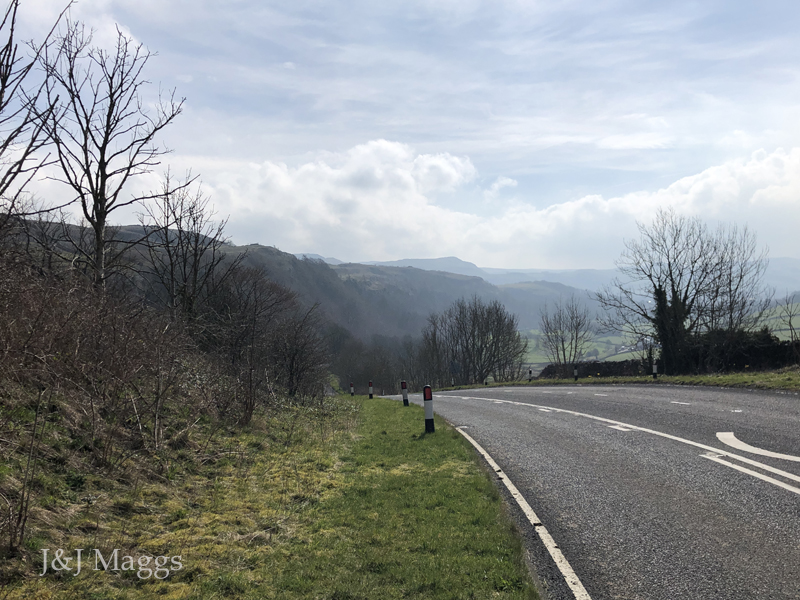
~ ~ ~ ~ ~ ~ ~ ~ ~ ~ ~ ~ ~ ~ ~ ~ ~ ~ ~ ~ ~ ~ ~ ~ ~ ~ ~ ~ ~ ~ ~ ~ ~ ~ ~ ~ ~ ~ ~ ~ ~ ~ ~ ~ ~ ~ ~ ~
We'd never been to Grange-over-Sands, but our internet searches suggested that it is a well-established resort town on the northern edge of Morecambe Bay and on the southern edge of the Lake District. When we arrived, however, the bay looked more like a pasture than a sea, and Grange's mile-long promenade now looked out over a massive mud flat. In fact, just a few days prior to our arrival, an arriving train had gone off its tracks and was now sitting in a large sink hole on the edge of the waterless inlet.
But we had an agenda that had little to do with the bay. We weren't there to sit on the promenade eating bonbons or sipping gin and tonic. We had several exciting spots to visit, and Grange was an excellent base for our adventures.
We woke on Friday morning after a restful night in our room at Corner Beech House in Grange-over-Sands and began our day with a delicious Cumbrian breakfast.
~ ~ ~ ~ ~ ~ ~ ~ ~ ~ ~ ~ ~ ~ ~ ~ ~ ~ ~ ~ ~ ~ ~ ~ ~ ~ ~ ~ ~ ~ ~ ~ ~ ~ ~ ~ ~ ~ ~ ~ ~ ~ ~ ~ ~ ~ ~ ~
5. Sizergh Castle
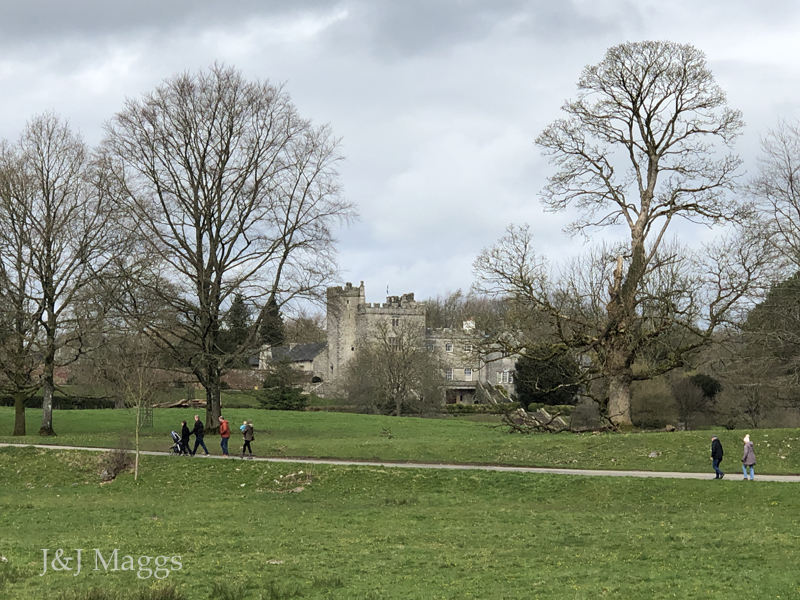
~ ~ ~ ~ ~ ~ ~ ~ ~ ~ ~ ~ ~ ~ ~ ~ ~ ~ ~ ~ ~ ~ ~ ~ ~ ~ ~ ~ ~ ~ ~ ~ ~ ~ ~ ~ ~ ~ ~ ~ ~ ~ ~ ~ ~ ~ ~ ~
Our first stop of the day was Sizergh Castle, one of the most interesting of the Trust properties on our list and, in retrospect, one of the most gratifying. The ancient property has been associated with the Strickland family since 1239, and in the mid 1500s the medieval house was modernized into the Elizabethan residence it remains. The Stricklands, Catholic Royalists, were in exile during the late 17th and early 18th centuries. When they returned to Sizergh, it appears that they were able to maintain the huge house, although their fortunes had suffered because of their political stance.
Sadly, much of the earliest furniture seems to have been sold over the centuries, although a few fine period pieces remain, along with others in Tudor and Jacobean styles, assembled in the 19th century from early parts. But it is the woodwork and the ceilings that make Sizergh such a special place. The carving, the wood paneling, and the decorated plaster ceilings throughout are of exceptionally high quality, described by the Trust as "some of the finest carved and inlaid decoration ever to be seen in the north of England."
~ ~ ~ ~ ~ ~ ~ ~ ~ ~ ~ ~ ~ ~ ~ ~ ~ ~ ~ ~ ~ ~ ~ ~ ~ ~ ~ ~ ~ ~ ~ ~ ~ ~ ~ ~ ~ ~ ~ ~ ~ ~ ~ ~ ~ ~ ~ ~

The paneling and this overmantel in The Queen's Room typify the high standards and financial means of the Tudor era Stricklands

The exceptional paneling in the Inlaid Chamber tells a tale of misfortune and salvation. In 1891 the paneling in this chamber was sold to the Victoria and Albert Museum for one thousand pounds, removed from the walls, and installed in the museum in Kensington. The paneling was returned to Sizergh in 1999 on long-term loan, and it once again holds pride of place in this remarkable building.
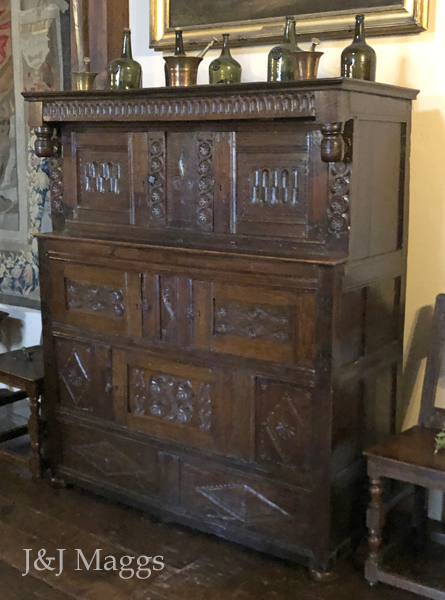
An interesting court cupboard in the chamber outside the tower,

and one of a pair of 17th-century oak backstools with backs unlike any we'd ever seen.
1 
~ ~ ~ ~ ~ ~ ~ ~ ~ ~ ~ ~ ~ ~ ~ ~ ~ ~ ~ ~ ~ ~ ~ ~ ~ ~ ~ ~ ~ ~ ~ ~ ~ ~ ~ ~ ~ ~ ~ ~ ~ ~ ~ ~ ~ ~ ~ ~
Our accommodation was only an hour from Castlerigg Stone Circle, and although it is not a Trust property, we couldn't resist a visit, We drove north over country roads, creeping through Windermere, which was clogged with tourists on this Easter weekend. Although the congested roads were not particularly conducive to viewing them, we were reminded of how beautiful the lakes are, particularly in Springtime.
~ ~ ~ ~ ~ ~ ~ ~ ~ ~ ~ ~ ~ ~ ~ ~ ~ ~ ~ ~ ~ ~ ~ ~ ~ ~ ~ ~ ~ ~ ~ ~ ~ ~ ~ ~ ~ ~ ~ ~ ~ ~ ~ ~ ~ ~ ~ ~
6. Castlerigg Stone Circle
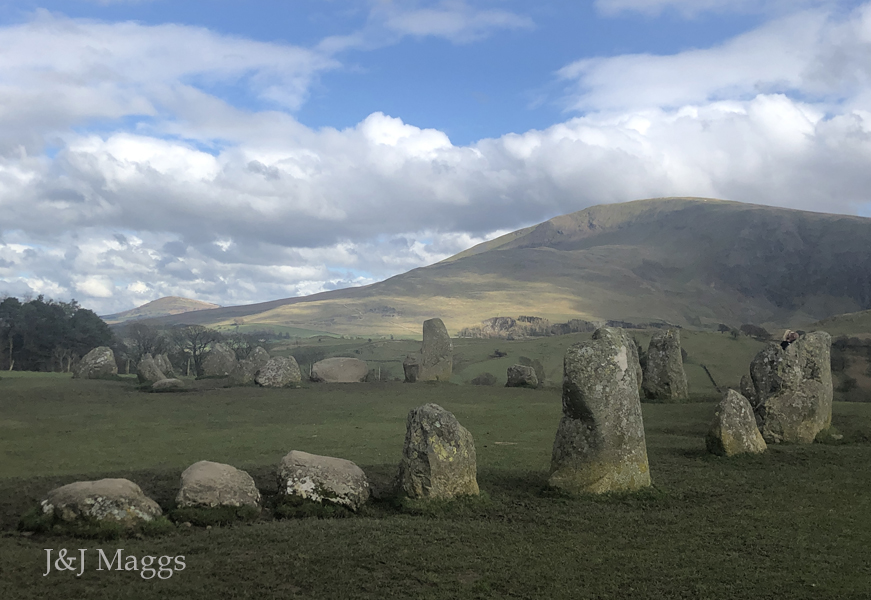
~ ~ ~ ~ ~ ~ ~ ~ ~ ~ ~ ~ ~ ~ ~ ~ ~ ~ ~ ~ ~ ~ ~ ~ ~ ~ ~ ~ ~ ~ ~ ~ ~ ~ ~ ~ ~ ~ ~ ~ ~ ~ ~ ~ ~ ~ ~ ~
Estimates of the date of the creation of Castlerigg Stone Circle place it several centuries before its illustrious counterpart, Stonehenge. Regardless of seniority, the setting of Castlerigg makes it truly breathtaking. And, unlike Stonehenge, it is open and accessible to humans and livestock alike.
~ ~ ~ ~ ~ ~ ~ ~ ~ ~ ~ ~ ~ ~ ~ ~ ~ ~ ~ ~ ~ ~ ~ ~ ~ ~ ~ ~ ~ ~ ~ ~ ~ ~ ~ ~ ~ ~ ~ ~ ~ ~ ~ ~ ~ ~ ~ ~


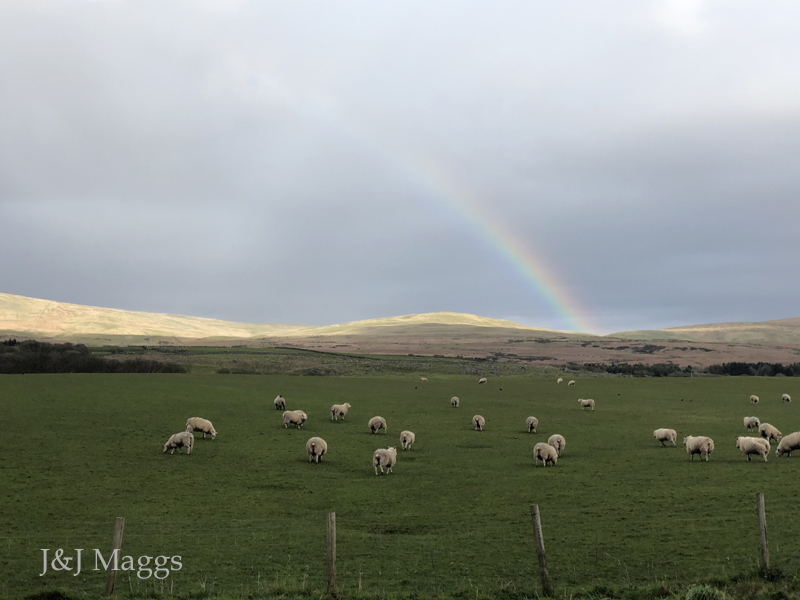
We drove back to Grange-over-Sands following the coastal route, allowing us to capture this stunning Cumbrian moment.
~ ~ ~ ~ ~ ~ ~ ~ ~ ~ ~ ~ ~ ~ ~ ~ ~ ~ ~ ~ ~ ~ ~ ~ ~ ~ ~ ~ ~ ~ ~ ~ ~ ~ ~ ~ ~ ~ ~ ~ ~ ~ ~ ~ ~ ~ ~ ~
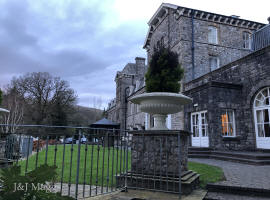

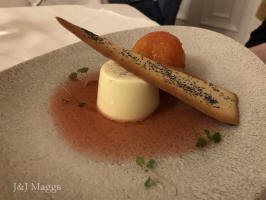
We ended our day with a delicious meal at the Grange hotel
~ ~ ~ ~ ~ ~ ~ ~ ~ ~ ~ ~ ~ ~ ~ ~ ~ ~ ~ ~ ~ ~ ~ ~ ~ ~ ~ ~ ~ ~ ~ ~ ~ ~ ~ ~ ~ ~ ~ ~ ~ ~ ~ ~ ~ ~ ~ ~
The next morning, after another satisfying breakfast, we left Grange-over-Sands and headed south to Lancashire. We had two National Trust properties on our itinerary for the day. The first was Rufford Old Hall.
~ ~ ~ ~ ~ ~ ~ ~ ~ ~ ~ ~ ~ ~ ~ ~ ~ ~ ~ ~ ~ ~ ~ ~ ~ ~ ~ ~ ~ ~ ~ ~ ~ ~ ~ ~ ~ ~ ~ ~ ~ ~ ~ ~ ~ ~ ~ ~
7. Rufford Old Hall

~ ~ ~ ~ ~ ~ ~ ~ ~ ~ ~ ~ ~ ~ ~ ~ ~ ~ ~ ~ ~ ~ ~ ~ ~ ~ ~ ~ ~ ~ ~ ~ ~ ~ ~ ~ ~ ~ ~ ~ ~ ~ ~ ~ ~ ~ ~ ~
Rufford Old Hall was built in 1530 by Sir Robert Hesketh, whose family had been nobility for at least seven generations. Shakespeare is believed to have been a member of the company of players resident at Rufford Old Hall during the tenure of Sir Thomas Hesketh (ca. 1581). The medieval East Wing was moved to Rufford in the 1720's.
~ ~ ~ ~ ~ ~ ~ ~ ~ ~ ~ ~ ~ ~ ~ ~ ~ ~ ~ ~ ~ ~ ~ ~ ~ ~ ~ ~ ~ ~ ~ ~ ~ ~ ~ ~ ~ ~ ~ ~ ~ ~ ~ ~ ~ ~ ~ ~
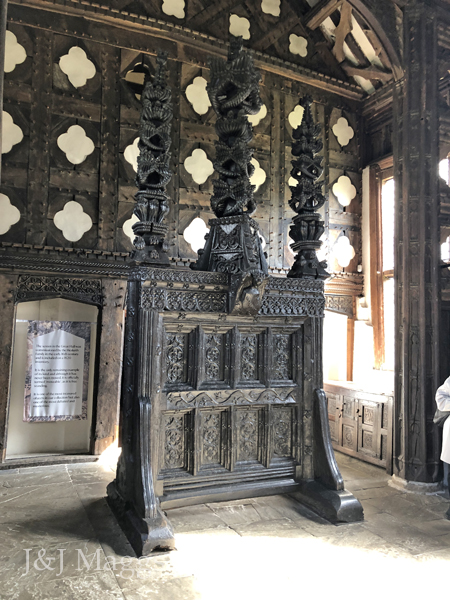
The massive oak screen in the Great Hall,


The two panel-back wainscot chairs, each dated 1689, probably commemorate a marriage in that year, although the Trust doesn't appear to know more than that.
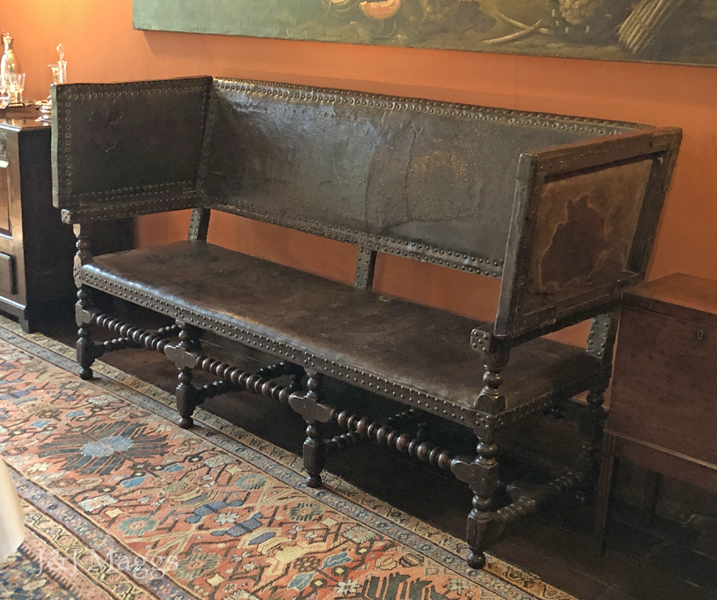
In the dining room, this leather-upholstered settee dates from approximately 1660.
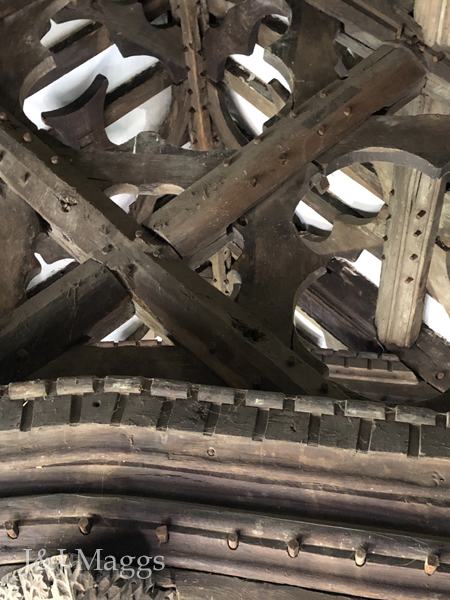
The roof of the Great Hall, with its carved oak hammer beam

In the Great Hall, angels bear the family arms of medieval benefactors
~ ~ ~ ~ ~ ~ ~ ~ ~ ~ ~ ~ ~ ~ ~ ~ ~ ~ ~ ~ ~ ~ ~ ~ ~ ~ ~ ~ ~ ~ ~ ~ ~ ~ ~ ~ ~ ~ ~ ~ ~ ~ ~ ~ ~ ~ ~ ~
From Rufford we drove about an hour northeast to visit Gawthorpe Hall.
~ ~ ~ ~ ~ ~ ~ ~ ~ ~ ~ ~ ~ ~ ~ ~ ~ ~ ~ ~ ~ ~ ~ ~ ~ ~ ~ ~ ~ ~ ~ ~ ~ ~ ~ ~ ~ ~ ~ ~ ~ ~ ~ ~ ~ ~ ~ ~
8. Gawthorpe Hall
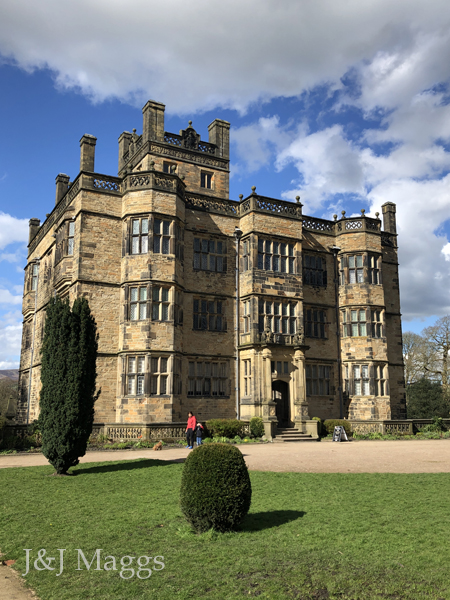
~ ~ ~ ~ ~ ~ ~ ~ ~ ~ ~ ~ ~ ~ ~ ~ ~ ~ ~ ~ ~ ~ ~ ~ ~ ~ ~ ~ ~ ~ ~ ~ ~ ~ ~ ~ ~ ~ ~ ~ ~ ~ ~ ~ ~ ~ ~ ~
Gawthorpe Hall was begun in 1600 and is believed to have been built for the Reverend Lawrence Shuttleworth (1545 - 1608) by Robert Smythson, the architect of Hardwick Hall in Derbyshire. The Shuttleworth family occupied the house for only about fifty years. In 1816 Robert Shuttleworth moved to Gawthorpe and began to restore the building, but he died two years later, leaving the property to his infant daughter, Janet. Some years later, she and her husband employed the architect Sir Charles Barry, the architect of Highclere Castle of Downton Abbey fame, to "restore and improve" the hall in the Elizabethan manner. Charlotte Bronte visited Gawthorpe in 1850 and described it as "a model of old English architecture."
The house and grounds were given to the National Trust in 1970. Since then, much of the house's original furniture has been returned on loan by current menmbers of the Shuttleworth family, and the National Portrait Gallery has loaned the Trust many period paintings, which reflect the appearance ot Gawthorpe in the 17th century. Perhaps the most noteworthy of the collections on display is Rachel Kay-Shuttleworth's expansive collection of embroidery, lace, and costume, much of which is prominently displayed in the house.
~ ~ ~ ~ ~ ~ ~ ~ ~ ~ ~ ~ ~ ~ ~ ~ ~ ~ ~ ~ ~ ~ ~ ~ ~ ~ ~ ~ ~ ~ ~ ~ ~ ~ ~ ~ ~ ~ ~ ~ ~ ~ ~ ~ ~ ~ ~ ~
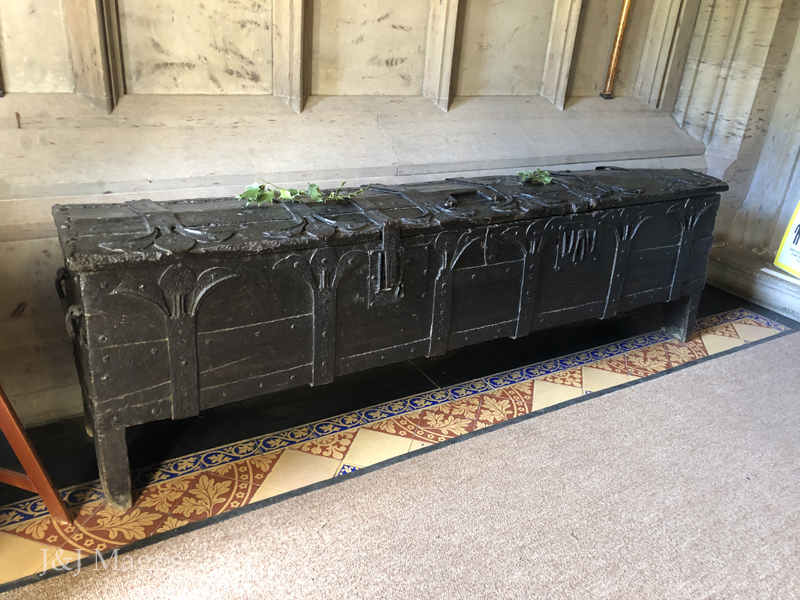
Perhaps the earliest piece of furniture in the house is this oak coffer or sword chest with iron fittings (c. 1500)
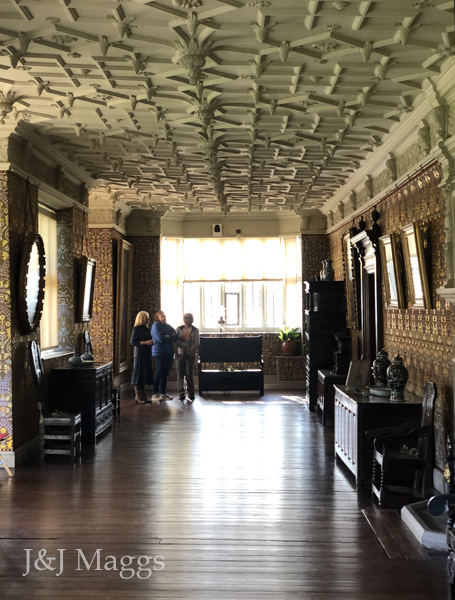
The Long Gallery with its remarkable plaster work completed by Francis and Thomas Gunby in 1603
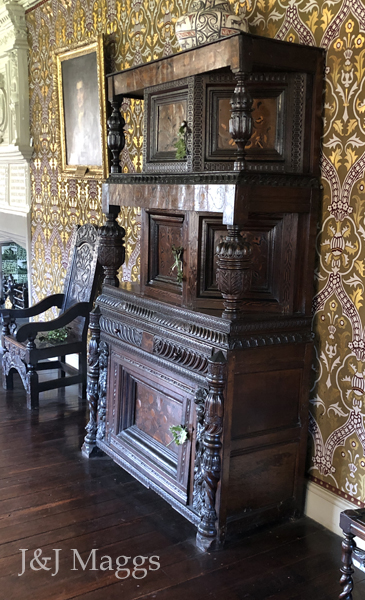
One of the long gallery's "Elizabethan" court cupboard, the whimsical creation of a 19th-century antiques dealer
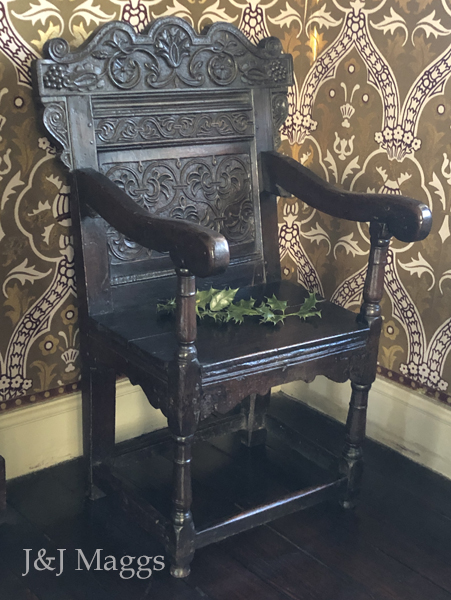
An oak wainscot chair, probably supplied by the 19th-century London dealer/furniture maker Samuel Pratt, who is credited with much of the furniture in the house

Gawthorpe's North Parterre, designed by Charles Barry
~ ~ ~ ~ ~ ~ ~ ~ ~ ~ ~ ~ ~ ~ ~ ~ ~ ~ ~ ~ ~ ~ ~ ~ ~ ~ ~ ~ ~ ~ ~ ~ ~ ~ ~ ~ ~ ~ ~ ~ ~ ~ ~ ~ ~ ~ ~ ~
CLICK HERE for Part III - The Yorkshire Dales, York, and the Peak District
~ ~ ~ ~ ~ ~ ~ ~ ~ ~ ~ ~ ~ ~ ~ ~ ~ ~ ~ ~ ~ ~ ~ ~ ~ ~ ~ ~ ~ ~ ~ ~ ~ ~ ~ ~ ~ ~ ~ ~ ~ ~ ~ ~ ~ ~ ~ ~
Click
HERE to visit the J&J Maggs Antiques home page.